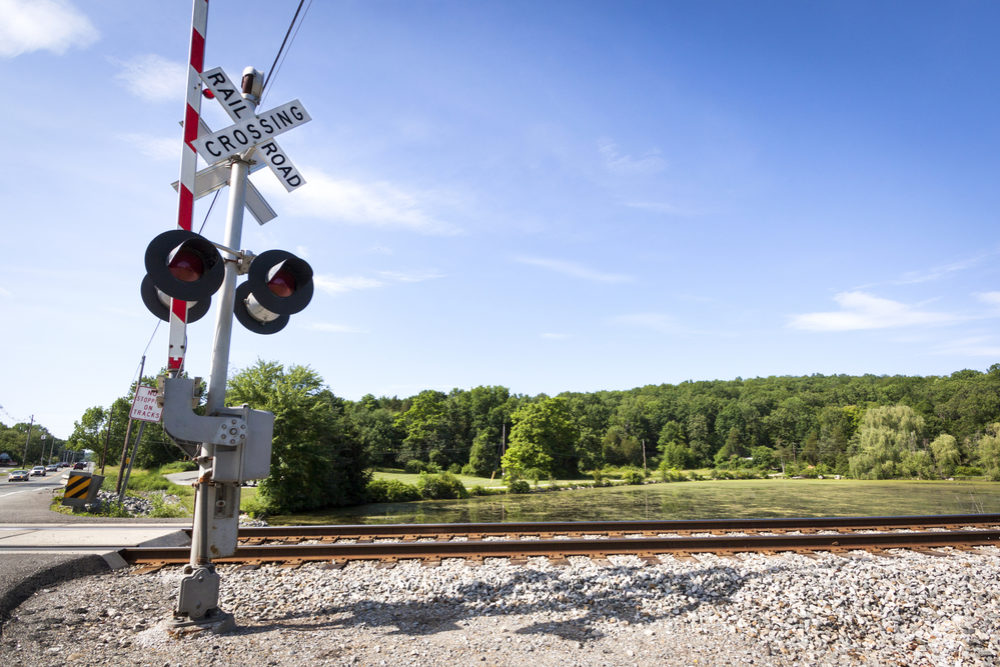Railroad Crossing Accidents Targeted By Nationwide NHTSA Campaign

As part of a nationwide effort to reduce the number of railroad crossing accidents, which claim hundreds of lives, federal highway safety officials have launched a multi-million dollar campaign that is designed to educate the public and raise awareness about the about the dangers associated with train crossings.
The U.S National Highway Traffic Safety Administration (NHTSA) and Federal Railroad Administration (FRA) announced their joint campaign, “Stop. Trains Can’t”, which will run nationwide over the coming weeks, urging drivers and pedestrians to take caution when approaching railway crossings.
Approximately $6.6 million of funding will be applied to the educational campaign, which is set to run through November 8, and will include radio, digital and social media advertisements that highlight the importance of drivers always remaining alert for active warning devices, such as flashing lights or gate arms descending or lowering, which indicate that a train is approaching.

Did You Know?
AT&T Data Breach Impacts Millions of Customers
More than 73 million customers of AT&T may have had their names, addresses, phone numbers, Social Security numbers and other information released on the dark web due to a massive AT&T data breach. Lawsuits are being pursued to obtain financial compensation.
Learn MoreAccording to the statement, the agencies will be targeting high-risk railway crossings in Alabama, Arizona, California, Georgia, Indiana, Tennessee, and Texas, where many serious and fatal collisions occur.
Railroad crossing accidents resulted in 907 deaths recorded in 2019, which was an 11% increase compared to the 816 fatalities recorded in 2018. As a result, officials from the National Safety Council (NSC) indicate railroad crossing fatalities are at the highest level recorded since 2007.
According to the NHTSA, a motorist is almost 20 times more likely to die in a crash involving a train than in a collision involving another motor vehicle.
Given the size and weight of either a freight or passenger train, a train traveling at 55 mph can take more than a mile to stop, even when the emergency brakes are applied, experts warn. Trains cannot swerve away from a vehicle on its tracks, leaving vehicle drivers responsible for making sure the tracks are clear when trains are approaching.
Despite the fact that accidents involving trains are nearly 20 times more lethal than vehicle-to-vehicle collisions, past research has shown drivers typically prepare to stop much further before arriving at a road intersection than they do at a train crossing.
A prior railroad crossing study presented at the Australasian Road Safety Conference in 2017 examined the behavior of drivers as they approached highway intersections and railroad crossings. According to the findings, drivers approaching highway intersections began preparing to stop 75 meters before the intersections. By comparison, drivers approaching railroad crossings only began stopping 20 meters before the crossing, leaving less reaction time for applying the brakes.
In February 2019, the National Transportation Safety Board (NTSB) released their “Most Wanted List” of safety technology, which included the development and implementation of positive train control system that would include collision avoidance capabilities on main line tracks. The primary focus was to target passenger railways and at highway intersections.
The campaign stresses that if motorists take precautions and treat railway crossing seriously, nearly one thousands lives could be saved annually, as well as preventing many life-changing serious injuries. The agency recommends the public follow the following simple steps when approaching a railway crossing.
- Stop and look both ways and listen before crossing because trains always have the right of way.
- Always make sure you have room to get across the tracks without leaving your vehicle partially within the rail crossing area.
- Stop 15 feet away from crossing gates.
- Never drive around a lowering gate and never ignore railway crossing signals.
- Always wait for the crossing arm gates to raise all the way and the lights to stop flashing before crossing the intersection.
- Never assume it is only one train passing.
- If your vehicle stalls in a railroad crossing, get out of the vehicle immediately and call the number on the nearby crossing sign or 911.





0 Comments